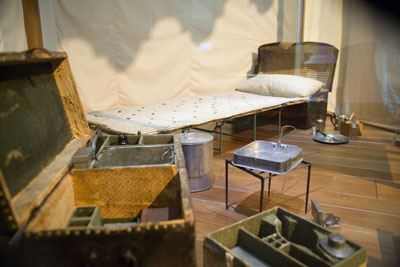|
George Washington: An American Icon
When George Washington (1732-1799) stepped onto center stage in a starring role as commander-in-chief of the Continental Army during the American Revolutionary War, he quickly became an iconic figure for Americans. Over 200 years later, Washington remains an enduring symbol of American freedom and independence.
Why Is Washington So Admired?
As commander of the Continental Army during the American Revolution, George Washington put his talents, leadership, life, and fortune at the service of his country.
From the beginning, General Washington made it clear that his role as commander-in-chief of the Continental Army came from the American people, through their elected representatives in the Continental Congress. And he served without pay, knowing he faced an almost impossible task. Washington quickly became a larger-than-life symbol of unwavering commitment to the cause of American independence and nationhood. He never gave up during the long, torturous path that was the American Revolutionary War.
George Washington wasn’t a flawless human being—and he wasn’t a military genius. He lost more battles than he won. But Washington had personal characteristics that mattered most in a lengthy war against a formidable foe. Washington was composed, fearless, untiring, and able to learn from his mistakes. And he quickly figured out that the way to win the war was not to lose. Washington understood how power worked—but he used it to spur support for the Revolutionary cause, not for his own benefit.
Washington managed to keep his small, inexperienced fighting force together, even when the Continental Army consisted of an unpredictable stream of raw amateurs. During the harsh winter of 1777-78 at Valley Forge, Pennsylvania, Washington’s ability to hold together his starving, freezing, ragtag troops became legendary. Washington’s daring successes at Trenton (December 26, 1776) and Princeton (January 3, 1777), New Jersey gave the revolutionary cause new life—even as it teetered on the very brink of extinction. With only a few exceptions, when he was called away on official duty, Washington spent the entire war in the field with the Continental Army.
After the peace treaty was signed and the last British troops left New York City in 1783, George Washington did something that was unheard of at the time and astonished many: he resigned his commission as commander of the army, voluntarily giving up tremendous power. Then he went home to Mount Vernon.
At the end of the war, no man was more admired than George Washington. He had become a legend in his own time. Yet Washington never became “a legend in his own mind.” As commander-in-chief of the army—and later as our first president—Washington could easily have become dictator or king. But he didn’t. Washington believed in the democratic ideals of the new nation. He realized that America could only work if government’s power came from the consent of the people, and if that power was peacefully transferred.
Unmatched in character and leadership (even his critics had to admit that Washington could not be bribed or corrupted), Washington inspired loyalty. George Washington was there to serve. He knew how to stay the course—and when to leave power behind.
"George Washington Slept Here"
Dotting the landscape of places like Pennsylvania, New Jersey and New York are numerous colonial-era homes and taverns where George Washington is said to have spent the night. Some of these claims are true. Some are likely only wishful thinking. But the desire to claim a tangible connection to our Revolutionary War hero and first President runs strong.
As commander of the Continental Army during the American Revolutionary War, General George Washington usually did sleep and eat in the nearby homes of well-to-do people during the eight years he led the American military campaign. But among George Washington’s camp equipage were tents, this folding bed, cooking and eating utensils, and other equipment that he used when encamped on the field with his troops.
Yet the George Washington camp bed in The Henry Ford’s collections is more than just a humble cot, used when no better option was available. This object symbolizes George Washington as a leader who cared more about his men and the cause of democracy than he did for himself.
 |
George Washington’s camp bed and camp chest on display in Henry Ford Museum. THF.51737 |
The Washington Camp Bed in Henry Ford Museum
In Henry Ford Museum’s "With Liberty and Justice for All" exhibit, visitors stand in quiet contemplation before the Washington camp bed on display, gazing at a humble cot where the great general took some weary rest during the struggle for American independence.
A great many stories of American ingenuity and innovation abound in Henry Ford Museum. But these stories generally do not involve military history. Why, then, display a bed associated with war?
The bed is on display in Henry Ford Museum’s “With Liberty and Justice for All” exhibit, which explores the proud and painful evolution of American freedom, from the Revolutionary War through the struggle for civil rights. This exhibit, then, is about social innovation: new ideas that render old ways obsolete and radically alter how people think about themselves, their interactions with others, and the larger world.
The Revolutionary War became about more than just American independence from Britain. It evolved into a new way of thinking: that it was possible for a people to govern themselves through a democratic system of elected representatives. The Revolutionary War also launched Americans on the road toward a newfound sense of national identity as Americans, rather than British subjects, New Englanders or Virginians. And George Washington was at the center of that new way of thinking.
| |
-- Jeanine Head Miller, Curator of Domestic Life
|
|

